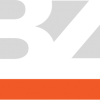It’s not true because it rhymes, but its rhyme helps us remember the truth.
And the truth is this: leaders are readers. That is, effective leaders are extensive readers.
Why is this true? Because reading forces us to think. Really think. It compels us to consider different—sometimes radically different—perspectives. And reading provides us an inexhaustible resource of ideas and insight, wit and wisdom.
Without exception, the most successful CEO’s are voracious readers. So whether your leadership path is headed to the C-suite (or staying there), or that path involves becoming an army of one taking on the world, Here are three steps to becoming the reader you’ve always wanted to be and the leader you know you can be:
- Read with a purpose
- Read with a process
- Read with a pen
STEP ONE: Read with a Purpose
All books are not created equal. By that statement I’m not referring to good books and bad books, of which there are plenty of both. I’m referring to the kinds of books we can read: the breezy novel and the dense classic, the self-help bestseller and the industry tome.
Because all books are not created equal, all reading is not the same. I just finished one of the best business books I’ve read all year, Deep Work by Cal Newport. As I read it, I outlined his main points and circled key words (more on this later). I also filled pages in my journal on insights gained from Cal’s book and the specific steps of action I’m going to take to apply its principles.
For Christmas I received the book Silence, the subject of a major motion picture that was just released by Martin Scorsese. This is a gripping novel about two 17th century Jesuit priests who travel to Japan as missionaries and experience a crisis of faith. I read this book slowly, thoughtfully, soaking in the lyrical prose and pondering the personal pain of each of these men.
How we read is defined by what we’re reading and why. On the one hand, we read for pleasure and should take our time in a book, like sipping fine wine. On the other hand, we read for personal and professional growth and should attack the pages like we’re conquering a city.
STEP TWO: Read with a Process
When you’re reading for personal and professional growth, there’s a strategy to it (just like conquering a city). “Most people read by jumping in and starting at the first sentence. That’s the wrong way to read when you’re trying to extract information,” writes Robert Pozen in Extreme Productivity.
Here are his three steps to reading effectively:
- Grasp the structure of the reading. How does it begin? How does it end? What are the key topics addressed? In an article or a chapter of a book, these are found in the subheadings. In a whole book they found are in the table of contents. Before you start reading, have a general grasp of the flow of thought the writer is presenting, like looking at a map before you drive across the state.
- Read the introduction and conclusion. Don’t read in linear fashion. First get a grasp of where the author is going at the start by reading the introduction and where he or she lands at the end by reading the conclusion. These two stakes in the ground will allow you to more thoughtfully analyze the territory between them.
- Skim the tops of the paragraphs. What Pozen means by the “tops of the paragraphs” are the thesis statement (that is, the summary sentence) of each paragraph, which are usually found at the beginning. The point of this, however, is not speed. You can do this slowly, if you like. The point is understanding and analyzing the flow of thought—really reading the text—and sifting out the wheat from the chaff.
STEP THREE: Read with a Pen
I overheard my son emphatically announce to his little sister one evening, “Only a fool reads a book without a pen!”
Apart from the air of superiority that only an older brother can bear, I was impressed with his pronouncement and asked him where he’d learned it. “Dad, I learned it from you,” he replied, “and you said it to me just like that.”
Ouch! Apparently, fathers are not immune to an air of superiority.
Write to Remember
The point, however, is: most of us read passively and wonder why we can’t remember anything we’ve read. Active reading with pen in hand fires the neurons in our brain in a more complete way than just running our eyes across a page and fixes the content of the text more permanently in our memory.
As you read, underline important points, circle key words, and scribble your own thoughts in response to the author. John Adams once wrote 12,000 words in the margins of a book he was reading on the French Revolution, according to historian David McCullough. 12,000 words!
Of course, your “pen” can be a digital highlighter or a clipping tool. In matters like these, however, I’m biased to the analog activity of pen and paper. I believe the cognitive energy it takes to use them allows for greater retention. But that’s just me.
Write to Retrieve
Ultimately, you’re going to want to use the things you’re reading. So as you’re writing to remember, utilize a system that allows you to retrieve those things at a moment’s notice, like the quote I just cited from the biography of John Adams.
Again, there are lots of great digital tools to do this, not the least of which is Evernote or Microsoft’s OneNote. I use a simple notecard system with alphabetical filing (P for Poems, Q for Quotes, R for Research, S for Stories) Check out blogger and bestselling author Ryan Holiday’s system at the link below. It’s amazing.
How and Why to Keep a Commonplace Book
The point of all these is being able take what you’re reading and apply it to your life and leadership. The perfect quote, the well-told story, the brilliant statistic all come from the discipline of reading with a pen and writing to retrieve.
Here’s the Bottom Line
We live and work in a world that’s obsessed with the superficial. We can’t stand in line for more than a few seconds without checking our smartphone and can’t eat a basket of fries without posting them on Facebook. In this era of distracted connectivity and rampant shallowness, you have an opportunity to stand out as someone who’s deeply informed and whose words are truly wise.
When you read with a purpose, a process, and a pen, you’ll become that person and lead with power and impact.


